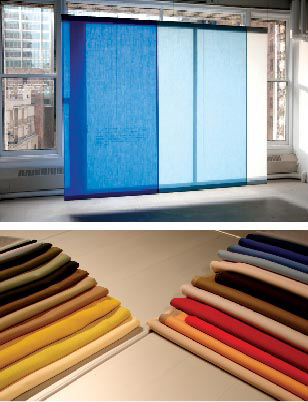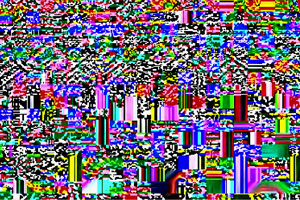Interview By Joe Iverson
ON WORKING IN A LEARNING ENVIRONMENT
 Ângela Ferreira: I teach at an art school, and I obviously learn an enormous amount from my students and benefit from being a teacher, but I do not work with my own students collaboratively. Somehow, I have never been able to do that. And what’s been really nice for me in this show is that this is a teaching institution, a work-shopped act of a live teaching institution. This is a teaching gallery and the person that is going to exhibit before me and after me is a student, learning to put up a show … and the use of that resource has been really perfect in a way.
Ângela Ferreira: I teach at an art school, and I obviously learn an enormous amount from my students and benefit from being a teacher, but I do not work with my own students collaboratively. Somehow, I have never been able to do that. And what’s been really nice for me in this show is that this is a teaching institution, a work-shopped act of a live teaching institution. This is a teaching gallery and the person that is going to exhibit before me and after me is a student, learning to put up a show … and the use of that resource has been really perfect in a way.
Narelle Jubelin: And there is a desire within this exhibition to articulate that, and that articulation has been part of the ongoing project… In my practice, I’ve elected to work within the context of university galleries from the beginning. I’ve looked for a kind of structure where I imagine there’s an active relationship to a broader art audience, but also, at the same time, to students. I got to a point where I was seeing that it’s actually extremely difficult for that kind of multiple audience to be built up. But in this case you can see that there’s an active will to engage and to intertwine the academic structure, the exhibition structure, and the work that goes into the making of an exhibition. “Learning Modern” is an incredibly careful, studied and worked-through project … where exhibition making has been teased out and worked on with students actively problem solving how to describe what we’ve been putting into place, and that’s very interesting.
ÂF: At one point in my process, I stopped and I said, “Really, what can I learn from Mies van der Rohe?” I’m 51. I’m sitting there with my desk and my computer and I’m being challenged to do that, and that’s good enough for me as far as a “learning” gallery is concerned.
A year and a half ago, we shared three days of thinking together about what is modern and what is an exhibition. In between that and now, your thoughts don’t stop, they carry on working. Then that, combined with the kind of pedagogical way that the exhibition is being–I’m talking now about the more formalistic display–the kind of pedagogic experimental way in which the exhibition is being, the interlocking of the people that we are working with – this is well put together as a project. Whether you would call Mary Jane [Jacob] a teacher or a curator, here, I’m not sure, but there’s the two going on very clearly in a very positive way.
NJ: In the past I deliberately looked for that engagement. You can be in a university gallery and you never see a student come in. Often gallery directors are looking for ways to breach that gap, but the gap is there.
ON WORKING LONG-DISTANCE:
NJ: A lot of time has gone into the establishment of how we are going to describe what we’re about to do. The defining that needs to be done is facilitated so much that you realize the person you’re actually working with is capable of putting in the time needed to engage conceptually with the new work while it is still in formation. Most of my conversations with Carla Nuarte have been at considerable distance, email or Skype, and there has often been that thing where you want and need the proximity to the person, but you need to talk these things through to establish a kind of technical language. With Carla that’s actually been achieved very quickly, because there was a very careful bringing together of expertise to establish a productive working relationship.
ÂF: Like producing a work in Lisbon to bring to Chicago, or working with Chicago people coming here and having to finalize a project to the point where it’s readable to somebody you’ve never met, but then having the benefit of that person knowing what you’re doing and being able to articulate it. The ideal loss of control is an interesting one, because it’s not as simple as loss of control. It’s loss of control and gain of another whole type of know-how, intellectual, material, specialized technical expertise which one may not have and cannot have. In my case I think the most successful projects in my practice, that mostly fulfill my ambition for my work, are actually not achievable by my single intervention, because you can’t—the very nature of my pursuit implies that it has to have other people.
NJ: Carla has entered, totally, within the project. It is a thing where she will send through ideas that she is starting to draw out of the material. It becomes like a collective pool of information. There’s aspects to the work that we’re doing that I think will continue, so it’s that thing where she’s particularly interested in unpicking part of one of the musical or Key Note references that we’re working with and developing it in another way. And if that starts to happen within the production of a work, you know, the work is working and the work will continue to work.
ON COLLABORATIVE PRACTICES
NJ: Ângela and I have done I don’t know how many projects together, but it’s striking to be working in this way in a show that’s not a collaborative show of ours. It’s another dynamic, and the fact that a group exhibition is being theorized here has been particular and another level of interest for us, for the project, no?
ÂF: There’s another interesting thing that could be happening here on the issue of collaboration at large now, speaking more broadly about collaboration. Narelle and I have a collaborative practice but we don’t have a collaborative practice, which means we’re actually onto a new kind of collaborative. We’ve done a few pieces together, but ignore those. We each have our own individual practices, but there is collaboration in those practices, and the knowledge of one feeds enormously into the knowledge of the other, and vice versa.
NJ: I’ll say to Ângela, “You know, you were working, this is what, this is where this has come from in terms of your thinking,”and she’ll say, “You remember my work better than I do!”And it’s that thing where you literally have someone that is following you, going along with you for a well-established period of time. It’s that thing where you have someone pushing you, too, challenging you in a way that isn’t toward their practice, but it’s a way where they can help you articulate and help you move forward. What she’s suggested is that we actually go and meet and try to tease out with other people what it is, trying to see what it is that we’re putting into place.
ÂF: It’s still individualistic, because it’s two people making, but it’s the authorship thing. What’s going on here is neither one nor the other. I’m not sure what it is yet, but it’s taken us 20 years to realize it’s happening.
Installation photograph in the SAIC Sullivan Galleries. Photo: James Prinz.
Narelle Jubelin in collabortion with Carla Duarte, Key Notes, 2009.
Process documentation, raw wool cloth organized by installation colorway.Photo: Carla Duarte.







